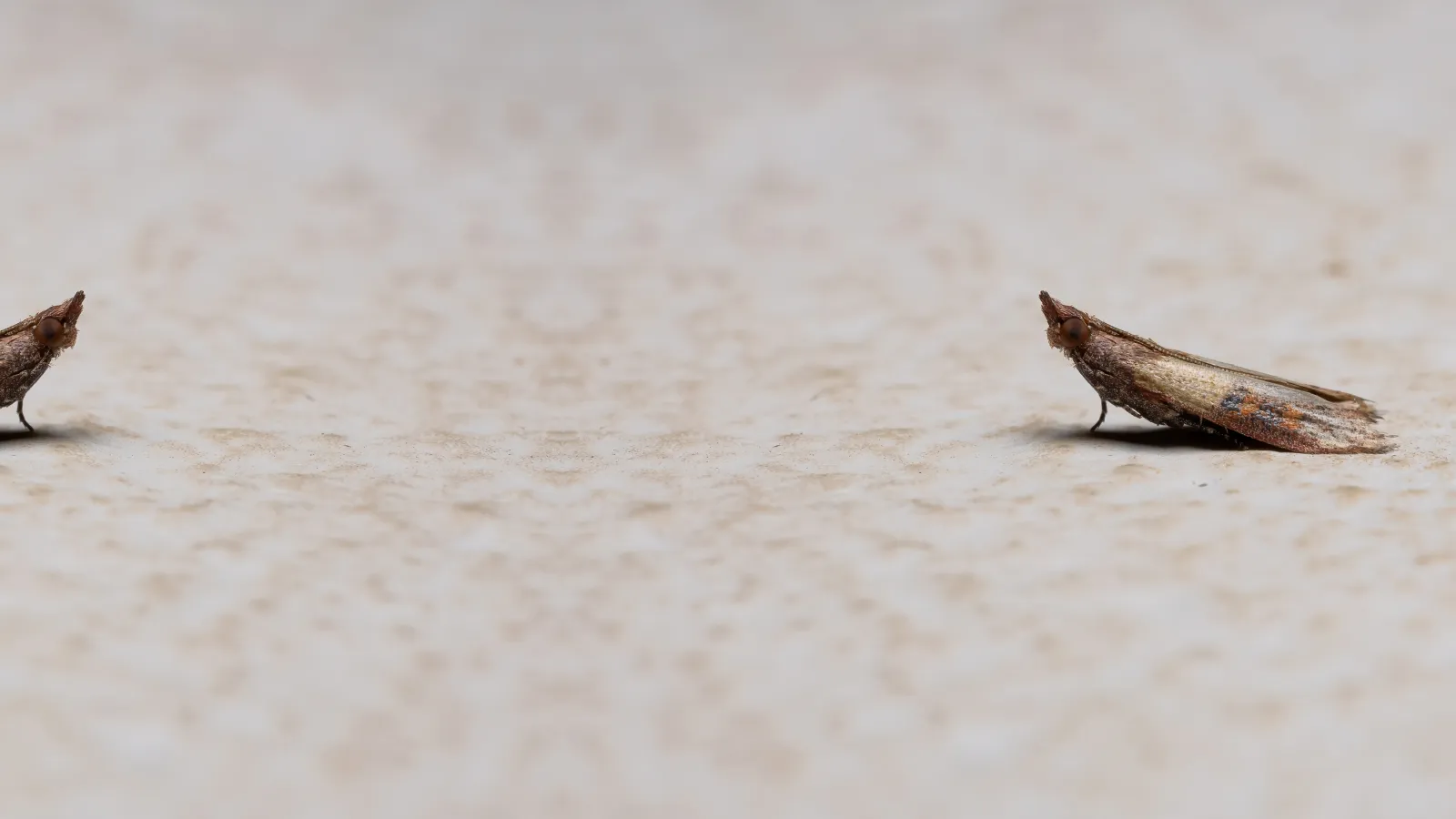
Moths
Latin Name: Plodia interpunctella
Moths belong to the order of Lepidoptera and are closely related to the butterfly in genetic makeup but are very different in behavior. Moths are nocturnal and can range from delicate pollinators to aggressive blood feeders. However, this varies significantly because there are around 160,000 species of moth. This insect serves as a major food source for many different types of animals, such as birds, various reptiles, insects, and a few plants.
Moths are widely known to feed off your favorite wool sweater. However, vampire moths of the genus Calyptra feed off the blood of animals and humans. These moths are primarily found in southeast Asia, eastern Africa, China, Japan, and India. The most common kind of moth that finds their way into your home is the Brown House Moth (Hofmannophila pseudospretella). It is around 8-14mm long as an adult and feeds off animal textures such as wool, leather, and feathers.
Slightly smaller, yet just as hungry for your sweater, is the Common Clothes Moth (Tineola Bisselliella), around 8-14 mm long and is responsible for putting holes in all kinds of fabric. These moths reach adulthood in about six weeks and produce around 1 generation per year.
Moths are known to congregate around artificial lights, and the reason is still unknown. However, if moths are gathering around our home in excess, the amount of outdoor lights could be your main attractive quality. Once they get inside your home, they've been known to wreak havoc on wool clothing, silk scarves, and even garments that consist of fur. These insects work quickly, and it's common for the moth's host not to notice the infestation immediately.
Even though these creatures do not bite or sting, the holes within our fabric aren't necessarily desired. The first thing you should do is determine what kind of moths you have in your home, which a professional can quickly determine. Next, you must get rid of infested materials and seal seasonal clothing in airtight bags. Sealing away kitchen pantry ingredients in airtight containers would also be a good idea. To prevent future outbreaks, keep up with regular house cleaning and have a professional implement a plan for clearing the moths out of your home.
Similar Pests: Brown House Moths